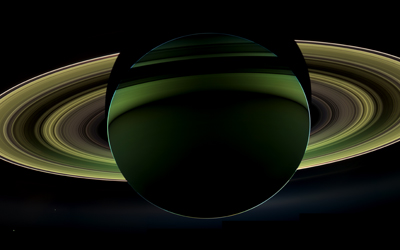Space Physics
UCLA is recognized internationally as a leader in the plasma physics of space. Research done by the space physics group includes data analysis, simulation, modeling, and theoretical plasma physics. Topics of interest include the dynamics of the solar wind, the magnetospheres of the Earth and planets, and the interaction of the solar wind with bodies in the solar system including asteroids, planetary satellites, unmagnetized planets, and planetary magnetospheres.
Recent work includes studies of loss processes in planetary atmospheres and the occurrence of lightning in planetary atmospheres. Much effort is being expended towards the understanding of terrestrial magnetospheric activity including geomagnetic storms and substorms. One of the ways that UCLA contributes to our understanding of the magnetized space plasma environment is through building and flying magnetometers on exciting missions of discovery. Magnetometers designed and fabricated at UCLA have enabled space science faculty and students to greatly expand our understanding of the magnetic structure and dynamics of the Earth, Venus, Jupiter, their satellites, asteroids, and the solar wind.
Historical Magnetometer Missions
UCLA scientists built the magnetometers for the Air Force Geophysics Laboratory (AFGL) Mid-Latitude Magnetometer Chain, established in 1978, as well as the magnetometers on many satellite missions: Applied Technology Satellites (ATS) 1 and 4, launched in 1966 and 1968; the Orbiting Geophysical Observatories (OGO) 5 and 6, launched in 1968 and 1969; the Apollo 15 and 16 sub-satellites, launched in 1971 and 1972; the International Sun-Earth Explorers (ISEE) 1 and 2, launched in 1977; The Pioneers Venus Orbiter (PVO), launched in 1978; the Active Magnetospheric Particle Tracing Experiment (AMPTE) United Kingdom Satellite (UKS), launched in 1984. The Galileo spacecraft, launched in 1989, the Australian FEDSAT mission, and NASA's Space Technology 5 (ST-5) mission launched in 2006. The magnetometer on Galileo discovered Ganymede's intrinsic magnetic field and provided compelling evidence of a liquid water ocean below Europa's icy crust. ST-5 was NASA's first micro-satellite constellation mission, which flew three identical spacecraft through the Earth's inner magnetosphere. Presently operating experiments include magnetometers on the International Solar Terrestrial Program (ISTP) Polar spacecraft launched in 1996, and the Fast Auroral Snapshot Explorer (FAST), launched in 1995.
More recent UCLA-built magnetometers include the DSX mission to the inner magnetosphere and SpaceIL's Beresheet lunar lander in 2019, the Mars InSight lander and ELFIN CubeSats launched in 2018, and the MMS mission to study reconnection launched in 2014.
In addition to the space-based magnetometer program, UCLA builds state-of-the-art ground-based magnetometer systems that are currently deployed at over 40 sites in China, Europe, North and South America and Antarctica. These ground-based arrays complement the space-based observations and will continue to play a vital role in understanding the heliospheric-magnetospheric-ionospheric system.
In addition, UCLA Faculty, researchers and students are involved with the magnetometer data analysis teams on the Cassini mission to Saturn, on the European Space Agency's CLUSTER II constellation mission and its Rosetta mission that will land a package on the comet 67P/Churyumov-Gerasimenko, on NASA's STEREO heliospheric mission, and on ESA's Venus Express Mission.
Faculty in Space Physics
| Title | Position | Email Address |
|---|---|---|
| Vassilis Angelopoulos | Professor | vassilis@g.ucla.edu |
| Hao Cao | Assistant Professor | hcao@epss.ucla.edu |
| Margaret Kivelson | Professor Emerita | mkivelson@igpp.ucla.edu |
| Robert McPherron | Professor Emeritus | rmcpherron@igpp.ucla.edu |
| Christopher Russell | Distinguished Professor Emeritus | ctrussel@epss.ucla.edu |
| Marco Velli | Professor | mvelli@epss.ucla.edu |
| Ray Walker | Professor Emeritus | rwalker@igpp.ucla.edu |

